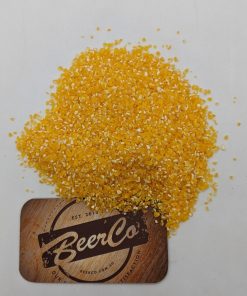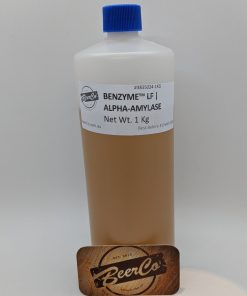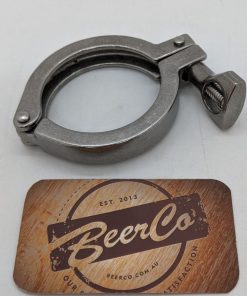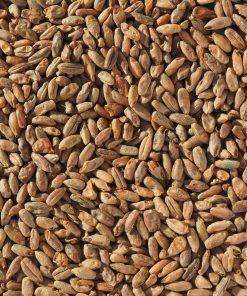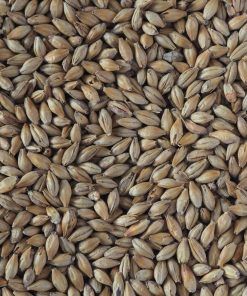Organic Raw Blue Agave Syrup Best Ground
$ 219,95 $ 87,98
Native to human history for 10 thousand years, agave is a great sweetener alternative. Our “Raw Agave Syrup” is made from blue agave hydrolyzed at 42ºC (107.6 ºF) to preserve the nutrients of agave, which makes it ideal for raw vegan diets.
Application/Industries:
Due to their highly fructose content Organic Raw 100% Blue Agave Syrup is the ideal raw material to obtain Agave distilled products by Industrial fermentation process.
- Alcoholic Beverages
- Bakery
- Cereals
- Chocolate
- Confectionery
- Dairy
- Hygiene
- Non-Alc Beverages
Claims:
- Natural sweetener
- A clean process, no additives or preservatives
- Low glycemic index
- Emphasizes the flavor of the final product
- Greater Maillard reaction
- Ideal for raw vegan and paleo diets
Recommend Use:
Organic Raw 100% Blue Agave Syrup must be diluted with water until obtain the desired soluble solids (°Brix).
Pack Sizes:
- 25 Kg HDPE Plastic Cubes
- 200 Kg HDPE Plastic Drums – Out of Stock – ETA Mid 2024 – Sign Up Back in Stock Alerts
- 1380 Kg Industrial Bulk Containers
Batch Analysis:
- TB-30809344 Best Before 08/09/2025 25 Kg Canisters
- TB-31006247 Best Before 10/06/2024 1380Kg IBC
Shelf Life and Storage Requirements:
Without water dilution the Organic 100% Blue Agave syrup shelf life is 3 (THREE) years unopened and without refrigeration. This product must be kept fully closed.
Once opened, the container must be completely consumed.
Raw Organic Agave Syrup must preferably be stored protected from light, at room temperature (25°C/77°F) in a cool dry place.
Product Specifications:
CERTIFICATE OF ANALYSIS
Determination |
Results | Range | Method |
| Brix | 76.0 | 73-76 | NMX-F-436-SCFI-2011 |
| pH | 4.64 | 4-6 | NOM-003-SAGARPA-2016 |
| HMF | 37.83 | Max. 70 mg/Kg | NOM-003-SAGARPA-2016 |
| Moisture | 23.99 | 23-26% | NOM-003-SAGARPA-2016 |
| Target color (Pfund) | 132 | >111 | Colorimeter Hanna |
Chromatographic Profile |
Results | Range | Method |
| Fructose | 89.88 | 85-90% | NOM-003-SAGARPA-2016 |
| Dextrose | 9.11 | 4-14% | NOM-003-SAGARPA-2016 |
| Sucrose | 0.01 | Max 1.3% | NOM-003-SAGARPA-2016 |
| Inulin | 0.02 | 0-6.5% | NOM-003-SAGARPA-2016 |
| Mannitol | 0.04 | 0.006-1.3% | NOM-003-SAGARPA-2016 |
| Other Carbohydrates | 0.13 | Max. 0.13% | NOM-003-SAGARPA-2016 |
Description:
100% Blue Agave Syrup Viscous Liquid, dark colour, crystalline, free of foreign material, sweet flavour
Microbiological: |
Results | Range | Method |
| Total bacterial count | <10 UFC/g | Max. 100 UFC/g | Petrifilm |
| Mold | <10 UFC/g | <10 UFC/g | Petrifilm |
| Yeast | <10 UFC/g | <10 UFC/g | Petrifilm |
| Coliforms | Negative | < 3 UFC/g | Petrifilm |
| E. Colli | Negative | < 3 UFC/g | Petrifilm |
| Salmonella | Negative | < 3 UFC/g | Petrifilm |
Certifications, Registers & Third Party-Studies:

More Reading about our Supply Partners at Best Ground International:
Best Ground International S.A. de C.V. leads a network of companies committed to producing natural, organic and functional products.
Our business model is based on a fair trade philosophy that gives people the opportunity to develop every stage of the supply chain.
Best Ground’s network comprises more than 5,500 hectares of agave, including three agave syrup and inulin processing factories.
To be “The Best on this Ground” we must protect and take care of everything around us: our fields, our workers, our communities; therefore, sustainability is one of our core values.
We are committed to create a positive impact in our environment and com-munity, by establishing better practi-ces. And we are proud to be the first agave supply chain certified by Fairtra-de International.
Our fields:
Best Ground knows the importance of working with sustainable agriculture. That is why we have developed working procedures that ensure the supply of agave and at the same time, contribute to preserve the natural resour-ces of the region.
Agave (Nayarit, Jalisco, Guanajuato)

The Organic Agave cultivated in Mexico reaches full maturity between 5 to 7 years. Then, the juice from the core or “Piña” is extracted, filtered, heated and concentrated in a syrup with a lighter consistency than honey. It can also be dehydrated to powder for HORECA industries.
Benefits include:
- No Artificial Flavours
- No Preservatives
- Low Calories / Low GIycemic Index
More Information about Agave:
There are over 300 species of Agave. The world comes from the Greek world αγαυή meaning “noble” or “admirable”. Agave grows on thousands of acres at high altitudes, in the red volcanic soils of Central and Western Mexico.
Agave begins as a seed, and once sown, it grows over 8 feet tall and wide. After 5 to 7 years reaches 10 to 15 kg and it’s ready for harvesting.
The harvesting process starts with the cutting of the leaves. The center of agave is then extracted from the earth and subsequently transported to the factory for further processing.
What’s noble about this plant is their reserve of carbohydrates, as they store fructans (polymers of fructose). Fructose contained in agave requires a simple obtention process.
Premium agave syrup is a natural sweetener produced by thermal hydrolysis of fructans, and its free of food additives, added sugars from other sources and offers a pleasant sweetness.
The Agave syrup is obtained from the agave core. The agave is a millenary plant and its history goes back to ancient times. The agave core is very rich in carbohydrates and the process for converting those in syrup is very simple, it is free of additives and has no artificial ingredients.
BeerCo Best Practice Tips and Advice for Fermentation of Agave Syrup for Agave Spirit Production:
BeerCo.au Agave Spirit Production Best Practice Guidance
How to Make Agave Wash “Mosto Vivo!” the Easy Way with HB Agave Pure
Dilution:
- The Brix used to produce an alcoholic fermentation must be low, so if it will be necessary to dilute the agave syrup between 10 and 20 ° Brix (or the ° Brix necessary to reach the desired volume of alcohol), the amount of alcohol that will be produced will depend on this.
- What dilution rates would you recommend? – Agave Syrup to Water (see CoA and product description for raw material). I would say 1:4 to get a SG of about 1065 – 1070
- Before to add yeast, have special attention in dilute first the Agave Syrup to 15 °Bx with water to avoid high osmotic stress on the yeast (dilutie 1 part of Agave syrup per 4 parts of water; 200 ml of yeast Agave Syrup with 800 ml of water)
Yeast:
- For DistilaMax® TQ or DistilaMax LS yeast of Lallemand at 70-50g/HL you could start with 1.0 gr/litre and increase to 2.5 gr/litre if necessary looking for to have 12% abv at the end of fermentation process
- What Lallemand DistilaMax Yeast would you recommend? Addition rates g/L? DistilaMax TQ or DistilaMax LS + A lot depends on the strength he is targeting but typically this syrup has very low nutrients and low buffers so watch pH.
- Hydration: Recommend using Lallemand Go-Ferm Protect Evolution™ during hydration – Lallemand Go-Ferm Protect Evolution™ Yeast rehydration sterols maximise fermentation security, yeast viability and vitality. Dosage: 30 g/hL
- Hydrate the yeast in treated water in a ratio of 10 litres of water per 1 Kg of yeast for 30 minutes.
- Add Yeast hydrated in the fermentation tank and receive musts
Fermentation:
- Agitation is required during ferment. Paying attention to the pH. Slowly adding the diluted syrup to the yeast is also best.
- pH Buffering recommend starting fermentation pH of around 5.0 – use aids like calcium carbonate and sodium bicarbonate to bring pH back up – watch it like a hawk as pH will drop rapidly
- In the fermentation process need to control the Temperature from 27 to 30C, pH will drop down towards 3.5 to 6 and add 1 gr/litre (per final volume) of diammonium phosphate (DAP) to aid yeast growth
- Yeast Nutrients: DistilaVite GN 70-50g/HL will also aid yeast health and recommend staggered nutrient additions.
Distillation:
- In the first distillation process with alambiques the goal is to reach 23% abv
- In the second distillation in alambiques the goal is to reach 55% abv
| Size | 25 KG, 285 KG, 1,380 Kg |
|---|
Fast Shipping with Professional Packaging
We provide a variety of shipping options thanks to our long-standing relationships with UPS, FedEx and DHL. Our warehouse personnel are well trained and will be able to pack your goods in accordance with the exact and precise specifications. Before shipping, all goods are carefully examined and secured. We deliver to thousands of clients each day across multiple countries. The fact that we're dedicated to becoming the largest online retailer in the world is obvious. Warehouses and distribution centers can be found in Europe as well as the USA.
Orders that contain more than one item are assigned processing times according to each item.
We will inspect each and every one of the items ordered before shipping. The majority of orders are shipped within 48-hours. Delivery is expected to take between 3 and seven days.
Returns
We do not manage the stock in our warehouse or factory. The levels of stock can change at any time. Please be aware that it's possible for your order to be out of stock after you have placed the order.
The policy is 30 days. If it's been longer than 30 days since you bought the item We're sorry to say that we can't offer you a full refund or exchange.
The item cannot be used, and it must be in its original condition. It must also still be in the original package.
Related products
Brewing Aids
Brewing Aids
Brewing Aids
Equipment
Equipment
Equipment
Equipment




















